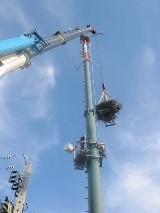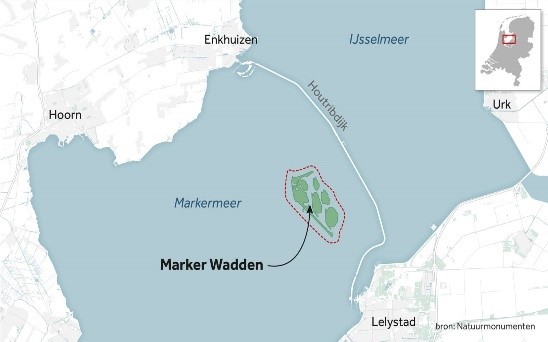Biodiversity
Cellnex advocates the protection and preservation of the environment and its biodiversity. To this end, Cellnex manages its facilities to minimise any type of environmental impact, not only the direct impact caused by Cellnex but also the potential impact of its providers when executing maintenance work and services. To achieve this, Cellnex also works with its suppliers to ensure that they are environmentally responsible and that they use best practices, for instance by properly managing waste and protecting biodiversity.
Cellnex takes into account local, national and European regulations on matters of environmental protection. To this end, Cellnex has a global tool (SALEM) for identifying and evaluating compliance with all the legislation that applies to the company. The tool is updated every month with the European, national and local legislation in reference to issues related to Environment, Quality, Health and Safety, Biodiversity, Energy, etc.

Cellnex Tower Finder App

In Ireland, several Cellnex’s sites are on land currently or originally owned by the State forestry body (Coillte forests). Therefore, whenever Cellnex develops new site on Coillte land, the company has to follow the national policy that states that, for each tree that is cut by Coillte to install a tower, another tree must be replanted tree elsewhere on the Coillte estate.
Moreover, to minimise the impact while working on Coillte, Cellnex Ireland has developed a “Cellnex Tower Finder App”, to make sure that operators are using the correct access route to a Cellnex location, among other things.
In addition to minimising its impact, Cellnex carries out specific projects in relation to biodiversity conservation.
DaMA and DaNA programmes
Cellnex uses environmental data servers to identify sites in protected areas and associated regulations, specifically sites located in areas of the Natura 2000 Network (DaMA is the project for Spain, DaNa is the global one for all countries).
The objective is to know which sites are in protected areas and thus be able to take the necessary measures for impact prevention and mitigation on these sites, in terms of biodiversity protection.
Total sites |
Inside Nature 2000 Network |
Perimeter of 100m of Nature 2000 Network |
Outside of Nature 2000 Network |
% of sites in protected areas |
|
Spain |
8734 |
997 |
198 |
7539 |
16% |
France |
4753 |
52 |
50 |
4651 |
2% |
Ireland |
520 |
31 |
20 |
469 |
4% |
Italy |
11477 |
334 |
182 |
10961 |
4.5% |
Netherlands |
817 |
23 |
23 |
771 |
8% |
Portugal |
4927 |
357 |
49 |
4521 |
8% |
UK |
8419 |
51 |
45 |
8323 |
1% |
Switzerland |
5085 |
0 |
336 |
4749 |
7% |
Total Cellnex |
44732 |
1845 |
903 |
41984 |
100% |

Preservation of natural habitat of storks

Cellnex Portugal has undertaken actions that aims to preserve the natural habitat of storks.
Prior to the removal of a stork nests, the company guarantees that the specific situation has evaluated and licensed by the Institute for the Conservation of Nature and Forests.

The Peregrine falcon projects
Cellnex Netherlands is helping to build nesting boxes for Peregrine falcons at several very high tower sites. This not only protects a rare breed of bird, but also helps Cellnex to keep the high towers free from pigeon droppings.
Moreover, the municipality of Amsterdam has installed a webcam on the Cellnex-towers at De Zuidas in Amsterdam. The camera is equipped with the latest technology, the images are HD-quality and the camera can be manually operated to different positions. Visitors can see not only the offices, the Zuid and the RAI, but can also zoom into Schiphol to see aeroplanes landing and departing. The WTC, A10 ring road and the ABN AMRO can also be viewed. Every image remains for 15 seconds until the next visitor operates the camera.
Alive webcam in the Mortel data tower offers an inside view of the peregrines. The telecom and data tower in the Mortel (Municipality of Gemert) houses the falcons. On the “Beleef de Lente” (Experience the spring) website anyone can view the life of a pair of peregrines that nested there in 2005. A few years ago, the Dutch Bird Protection Foundation installed a webcam that records every event. Looking inside the nest box is not only fun and interesting to do, but peregrine falcons are also very useful near the towers because they scare off pigeons, which are the favourite food of this bird of prey. Pigeon excrement can be a nuisance in the towers.

The Marker Wadden project

Marker Wadden is a unique nature reserve in development. The nature islands are being built with sand, clay and sludge from the Markermeer (a 700 km² lake in the central Netherlands). New forms of nature will develop on this novel group of islands with their natural shores, both under water and on the surface. It is a natural paradise for fish and birds and a wonderful recreational island.
Because there is no fixed internet connection to the island, Cellnex Netherlands has deployed a communication infrastructure based on microwave transmission. The connection is established using microwaves over eight kilometres, between the telecom & data tower in Lelystad and the site set-up point in the booth near the entrance of the Marker Wadden harbour.
The required equipment uses the self-supporting energy system on the island and the whole fits completely into the coherent architecture which is so typical for the Marker Wadden.
Thanks to this connectivity, the network can also be used in future for collecting data with, for example, sensors (IoT) or other ‘smart’ systems.

